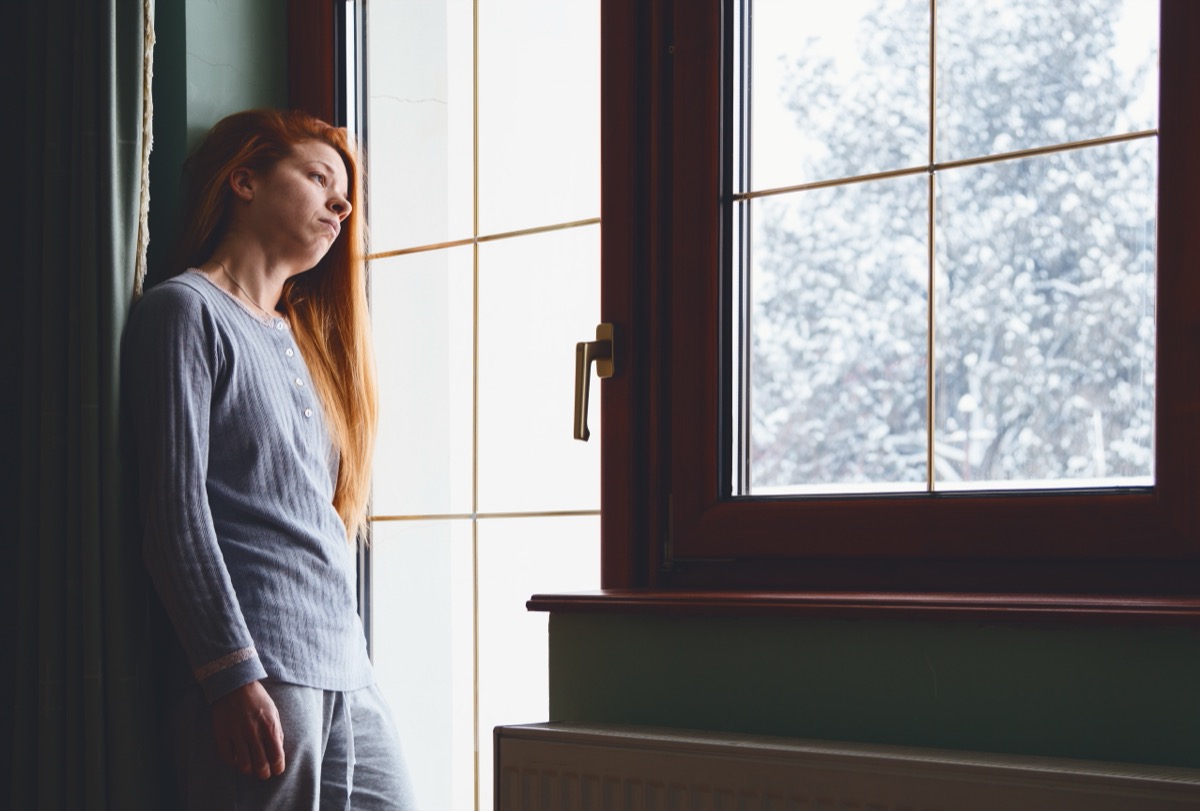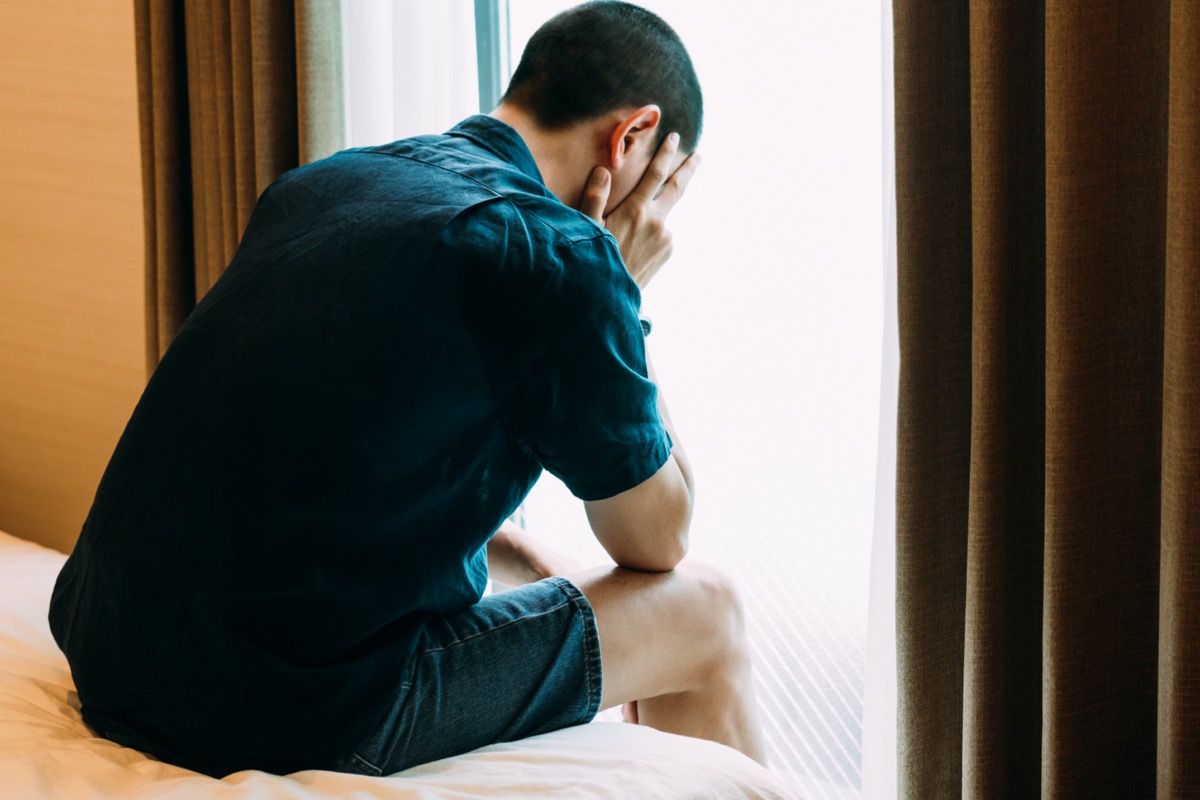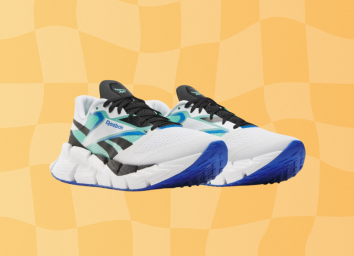The Difference Between Seasonal Affective Disorder and Winter Blues, MD Says

With short days, cold weather, and limited opportunities for outdoor recreation, many people find themselves suddenly—and understandably—feeling low in late fall and winter. For some people, this is simply a shift in mood that lifts as soon as those first blossoms appear in early spring, while for others, it may be a sign of a diagnosable, but potentially treatable, mental health issue.
According to a review published in Progress in Neurology and Psychiatry, Seasonal Affective Disorder (SAD) affects approximately five percent of the population. However, countless people may experience similar symptoms, often colloquially known as "winter blues," without necessarily receiving a clinical diagnosis.
Read on to discover what doctors and mental health professionals say is the major difference between SAD and winter blues and what you can do if you think you may be affected. And if you want to improve your wellbeing fast, check out The One Vitamin Doctors Are Urging Everyone to Take Right Now.
What are winter blues?

If you find yourself feeling more than a little disappointed when the seasons change, you're not alone.
"The winter blues summarize a feeling of overall sadness and fatigue associated with this time of the year," says Leann Poston M.D., M.B.A., M.Ed., medical advisor for Impakt Fitness.
"Wintertime can affect anyone's mood: shorter days, colder temperatures, and plummeting vitamin D levels are all factors," Poston adds. "While you may experience a lack of motivation, a feeling of sadness, trouble sleeping, and a tendency to spend more time in bed, most people can still make it to work and fulfill their responsibilities."
Related: Sure Signs You May Be Getting Depression, According to Experts
What is Seasonal Affective Disorder?

Seasonal Affective Disorder (SAD) is a type of depression that typically coincides with a change in season.
According to the American Psychiatric Association (APA), SAD—classified as Major Depressive Disorder with Seasonal Pattern in the Diagnostic Manual of Mental Disorders (DSM-5)—frequently lasts up to 40 percent of the year.
In addition to depression and a loss of interest in activities that you once liked, SAD may mean changes in your sleep or appetite, a loss of energy or feelings of tiredness, moving more (pacing, etc.) or experiencing slower movements, a lack of concentration or ability to make decisions, feelings of guilt or worthlessness, and suicidal ideation, the APA reports.
Related: Sign up for our newsletter for the latest health and fitness news!
How can I tell the difference?

If you find yourself struggling to tackle those everyday tasks that used to come easily to you, and this shift typically occurs as seasons change, Poston says you may be struggling with Seasonal Affective Disorder, not just winter blues.
"Unlike those with the winter blues, those with Seasonal Affective Disorder have overwhelming feelings of sadness that interfere with their ability to live their lives," Poston explains.
The APA notes that, while it can be diagnosed at any age, SAD most often takes effect between the ages of 18 and 30 and is more common in women than in men. While these factors may lead you to suspect a diagnosis of SAD, the only way to know for sure is to speak with a therapist or doctor. It's also important to note that some people experience Seasonal Affective Disorder symptoms in the spring and summer rather than in the winter or fall, although this is less common.
How are these conditions treated?

The first step toward treating winter blues or SAD is simple: contact a therapist or other healthcare professional to get a conclusive diagnosis.
Once you've been evaluated, there are a number of ways to help reduce the symptoms of either condition.
"Lifestyle modifications such as eating healthy, exercising, practicing good sleep habits, taking a vitamin d supplement, and investing in a light box may help, but it is also important to talk with your doctor about the symptoms you are experiencing and discuss the treatment options available for you," says Poston. The APA notes that talk therapy—specifically cognitive behavioral therapy (CBT)—is particularly effective at treating the symptoms of SAD; in some cases, antidepressants may be prescribed to help with your condition.
No matter what form it takes, getting help is essential—and it might just make next winter look a whole lot brighter.
For more, check out 11 Ways Your Diet Controls Your Mood.








